April 2025 release
Overview
Major Upgrades highlighted here:
| Component | Current | Previous |
|---|---|---|
| Android Scantrust Printer | 1.7.0 | 1.6.1 |
| Scantrust (iOS) | 4.7.0 | 4.6.2 |
| Video Auth | 2.5.2 | 2.4.0 |
| Photo Auth | 3.3.0 | 3.3.0 |
| Scantrust portal | 1.51.0 | 1.50.1 |
| Portal QR manager | 1.11.0 | 1.10.0 |
| Scantrust Consumer (STC) | 3.6.0 | 3.5.0 |
Individual Component Change List
A more detailed list of the substantive changes affecting each component.
Image Gallery, Translation Management, and Authentication Styling Customization
We are excited to introduce three new features in our latest release: Image Gallery, Translation Management, and Authentication Styling Customization. Here’s an overview of each feature and how they enhance the platform.
1. Image Gallery Feature
The new Image Gallery streamlines media management, making it easier to select and manage images within the platform.
- Currently available in the Landing Page Editor. Coming soon to the SaaS Portal and e-label Management Tool.
- User Benefits:
-
Easily select custom labels to reduce repetitive work.
-
Download previously uploaded images from Scantrust if local files are lost.
-
Archive images instead of deleting them to prevent accidental removals.
- Key Functionalities:
-
Upload Images: Upload single or multiple images with system-generated unique keys and tagging support.
-
Image Viewing Options: Choose between Grid View (larger images) or List View (detailed metadata).
-
Search & Filtering: Search images by name, key, or tags, with an option to include archived items.
-
Image Selection: Directly choose images from the gallery within the Landing Page Editor.
Example Screenshots:
- Image Gallery main view
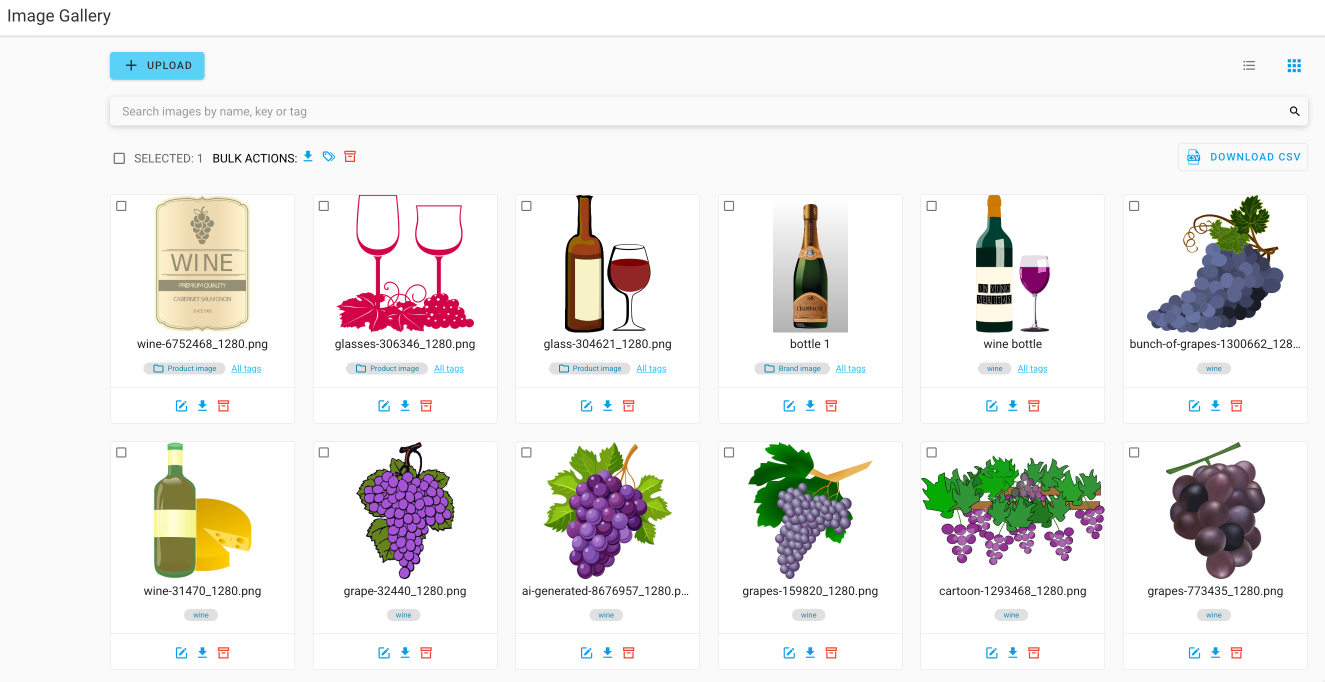
- Upload image pop-up
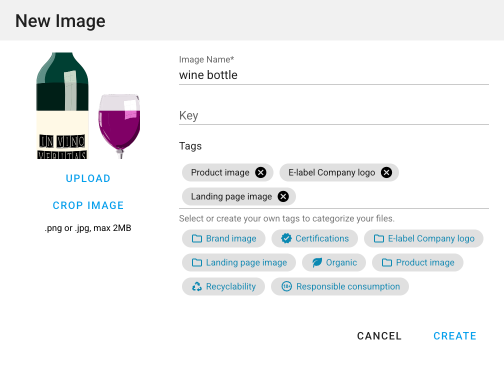
- Image selection in Landing Page Editor

2. Translation Management
A new Translation Management ensures a smoother localization process when editing landing pages.
What’s New?
-
Default Language Selection: Set a fallback language when creating landing pages.
-
Language Tab: Follows the same UI as the e-label translator with machine translation, review, and publishing workflows.
-
Enhanced Editing: Add and remove languages, edit linked images, and apply text formatting for translations.
-
Real-Time Preview: Instantly view translations with an improved language dropdown.
Example Screenshots:
- Selecting Default and Translation Languages
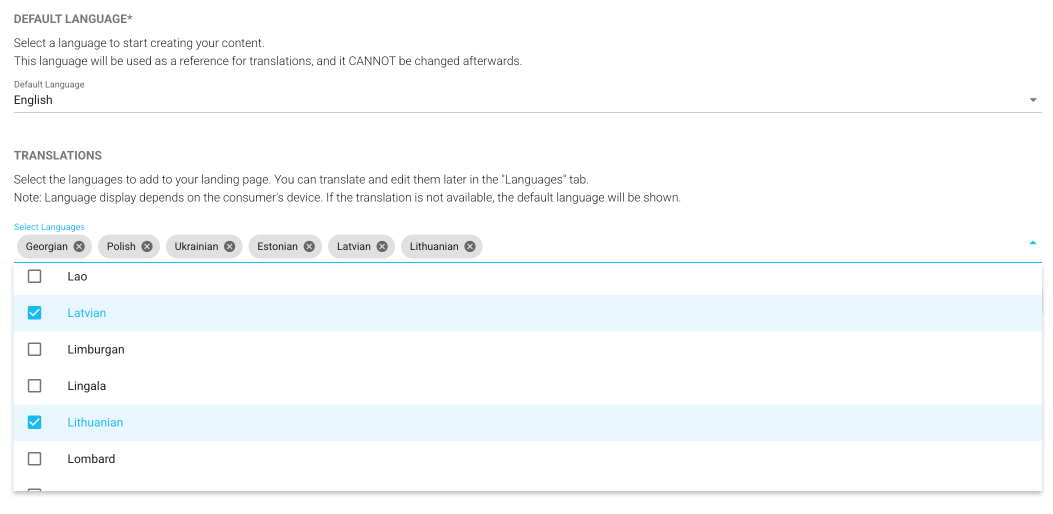
- Language tab with translations and real-time preview with language switcher
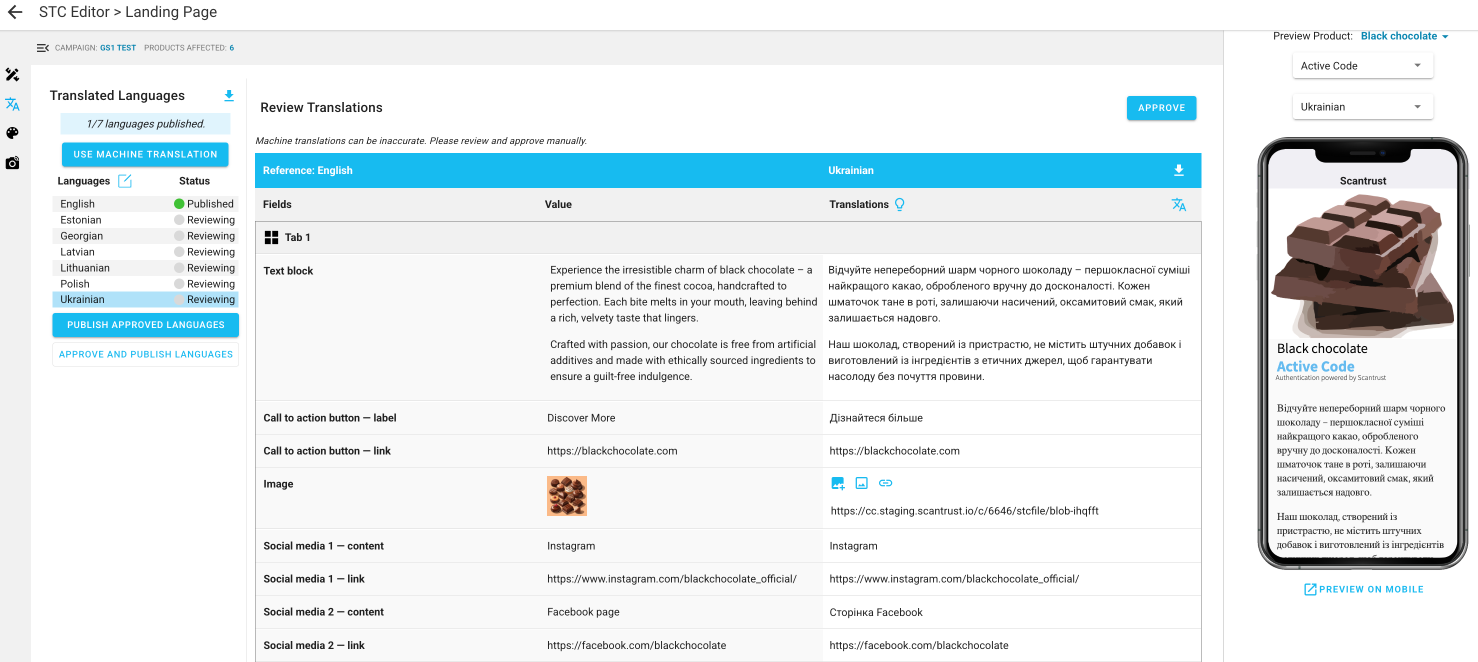
3. Authentication Styling Customization
We’ve enhanced authentication styling to allow more branding control for authentication applications.
- New Customization Options:
-
Logo Upload: Display branded logos on the authentication app’s splash and scanning screens.
-
Color Themes: Configure background, primary, and secondary colors to match brand identity.
-
Advanced Setup for STE Users: Additional settings for language enforcement and torch control.
Example Screenshots:
- Auth app branding editor
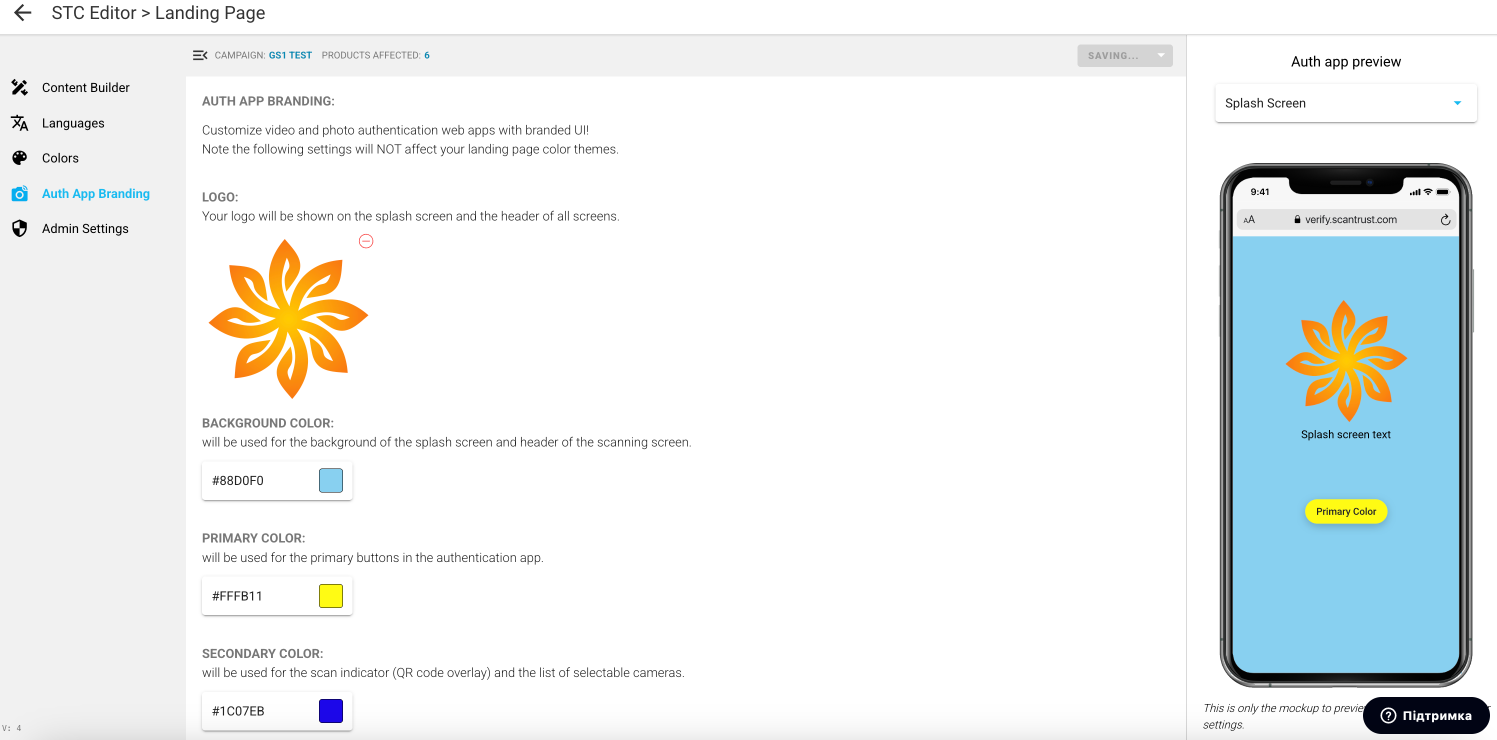
- Themed authentication screen
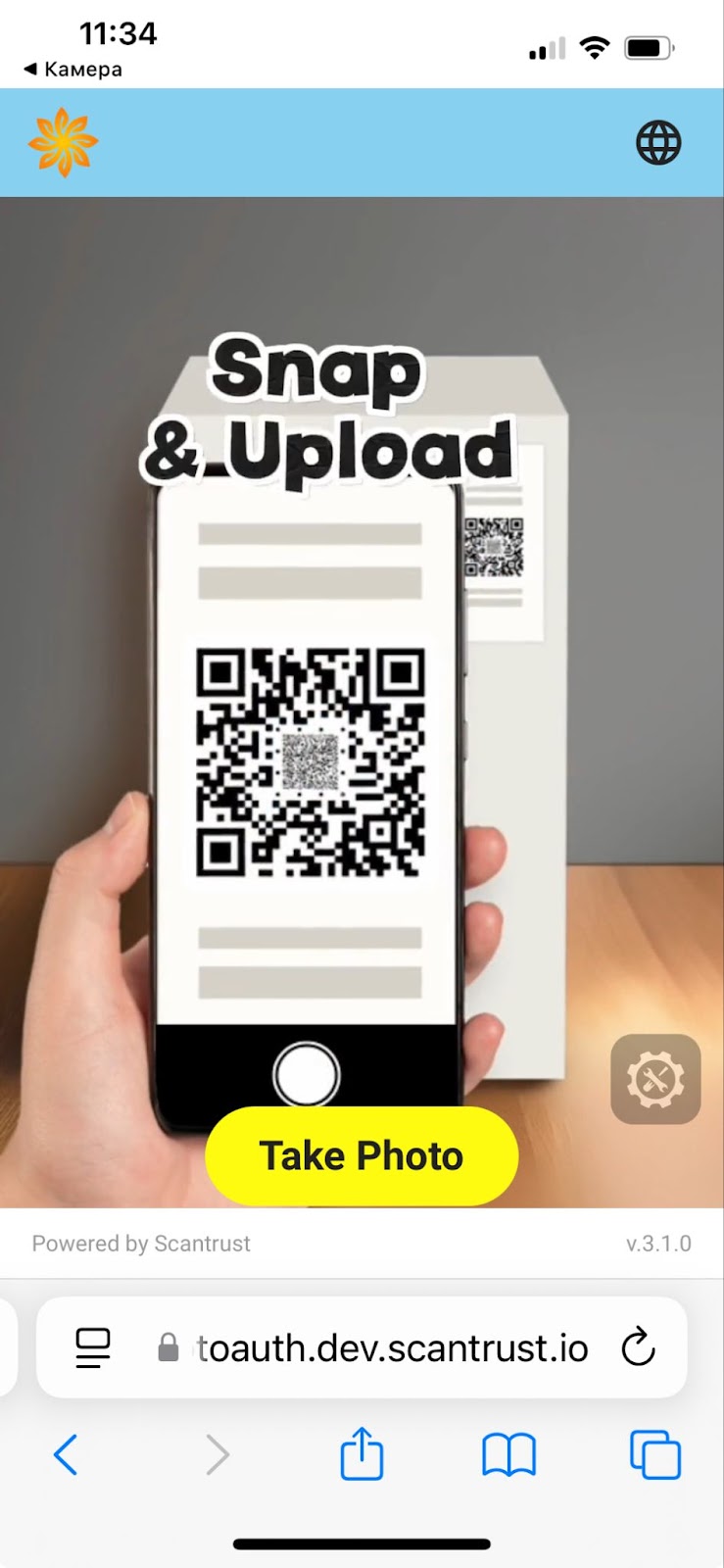
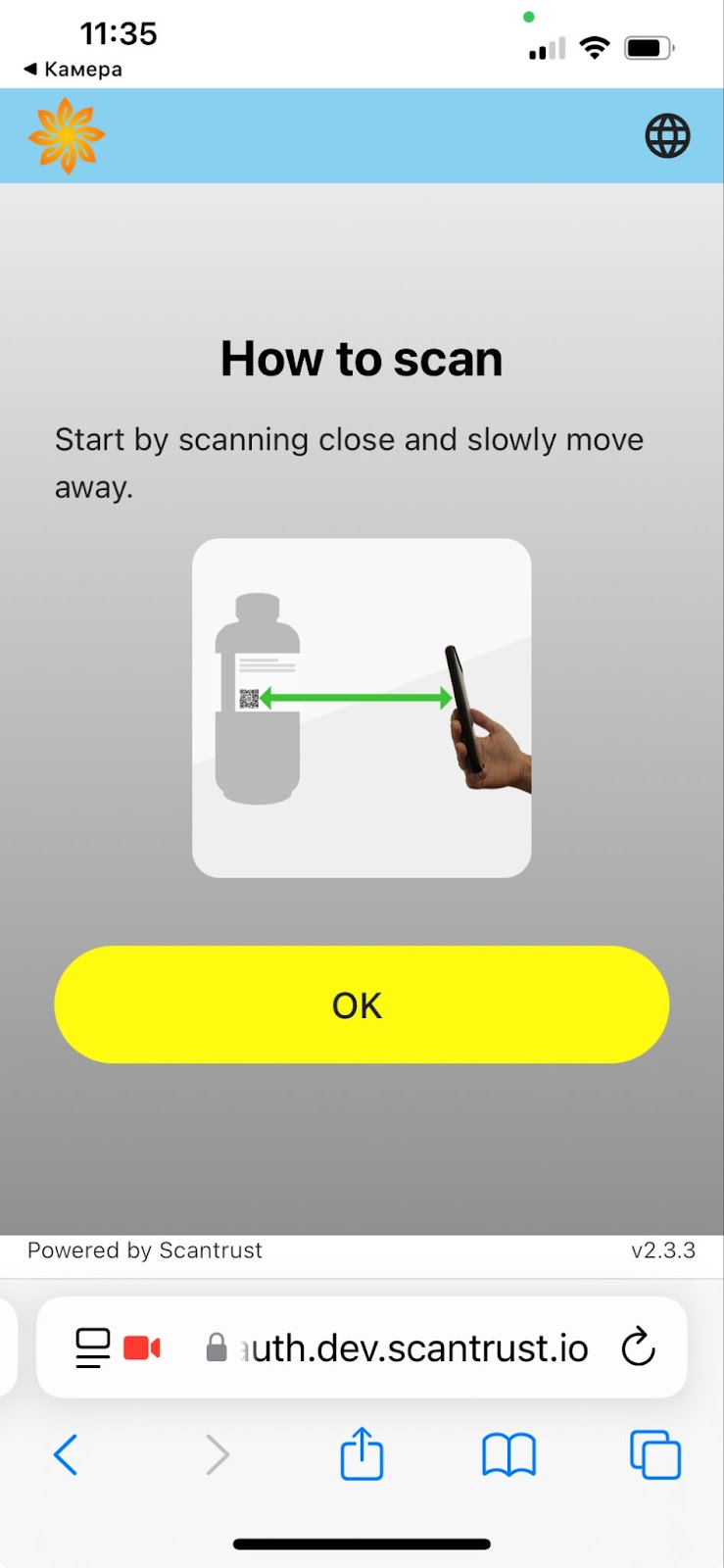
To use this feature in photo-auth or video-auth, you need to configure the CTA button on the landing page or set up a redirect in the company settings using the following URLs:
1. video-auth
-
Landing page: https://verify.scantrust.com/video/?uid=@scan_id&api_key=@api_key
-
Redirect: https://verify.scantrust.com/video/?uid={id}&api_key={api_key}
2. photo-auth
-
Landing page: https://verify.scantrust.com/photo/?uid=@scan_id&api_key=@api_key
-
Redirect: https://verify.scantrust.com/photo/?uid={id}&api_key={api_key}
These updates provide greater flexibility and a more personalized user experience.
Automatic Blacklisting based on unique sessions
What’s the Issue?
Automatic blacklisting based on scan count was functionally incorrect:
-
When a user performed both a query scan and an authentication scan on the same code, the system counted them as two separate scans, even though it was part of the same journey.
-
Additionally, authentication scans that couldn’t be verified (due to issues like poor quality images) would still count towards the total, leading to false alarms.
This made it harder to detect real counterfeit activity, as legitimate scans were sometimes considered for automatic blacklisting.
What’s the Solution?
1. Better Handling of Scan Sessions:
-
A scan session reflects the user journey. It refers to the typical path a consumer takes when interacting with a code. For example, first scanning to view product info, then scanning again to verify authenticity until they have a definitive result.
-
Now, we track scans more accurately by linking them to the session. When a user scans a serialized code during the query and then authenticates, the system knows these are related scans and counts them as part of one session.
-
When a user scans a serialized code multiple times due to poor image quality issues, the system knows these are related scans as counts them as part of one session until the user gets a definitive authentication result.
-
Session count is the same as the scan count if the user does not perform any authentication scans or if the codes are serialized SID codes.
2. Tracking Based on Install ID:
- Each app (including web apps) now sends a unique install ID when performing authentication, helping us track user sessions and ensuring accurate counts.
What This Could Mean for Clients:
No More Blackslisting Genuine codes due to Inflated Scan Counts:
- Multiple scans by the same user in a user journey won’t be counted separately, making our automatic blacklisting and scan data more accurate.
Better Counterfeit Detection:
- By counting user sessions, we can more accurately detect potential counterfeit activity.
How to Use This Feature:
In the Campaign Options under the Alerts tab, select Session Count as the alert reason. This will activate the new scan counting method for your campaigns.
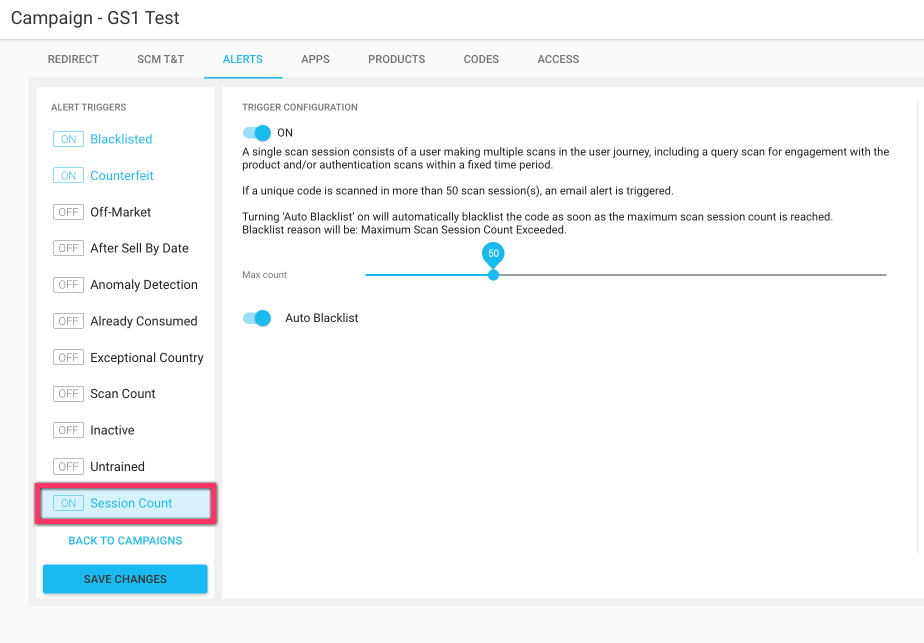
This feature improves how we track and count scan sessions for automatic blacklisting, giving us more reliable data for detecting counterfeit activity and helping us provide better insights to our customers.
The introduced feature for Automatic Blacklisting by Session Counts does not replace Automatic Blacklisting by Scan Count for customers that are using that old feature. You have to manually make the switch for each customer.